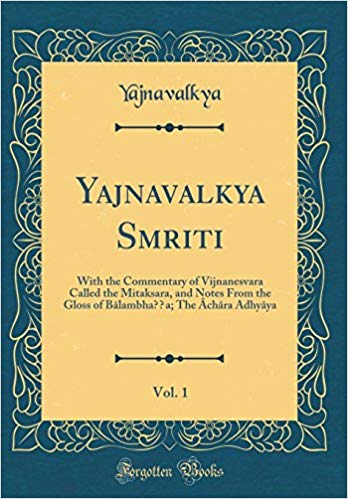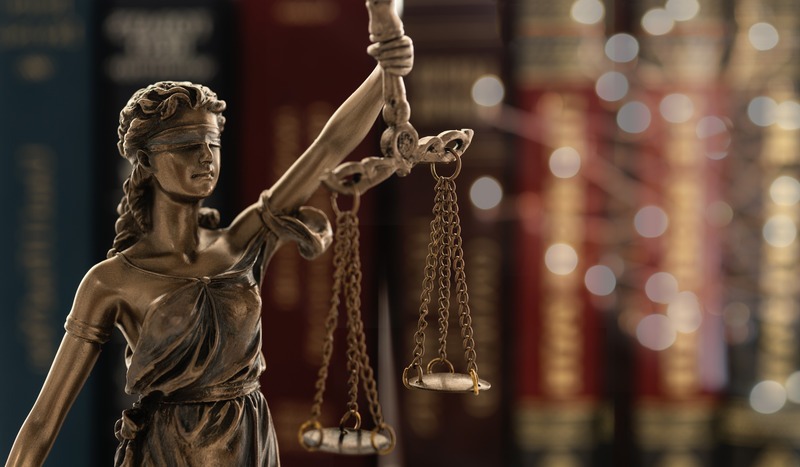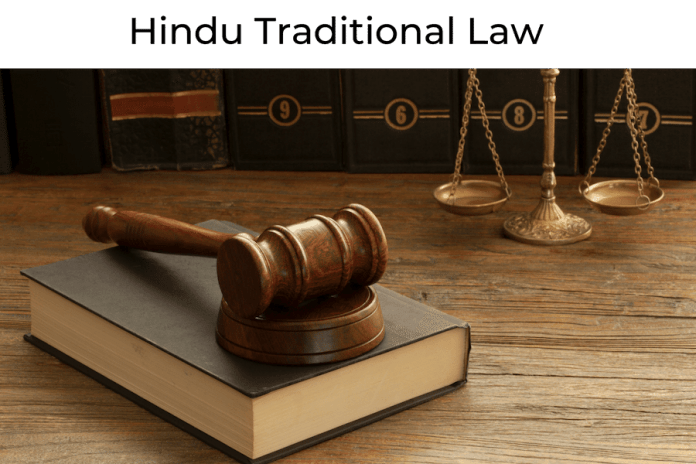Hindu law as a chronicled term, alludes to the code of laws connected to Hindus, Buddhists, Jains, and Sikhs in British India.
The Yajnavalkya Smriti is one of the numerous Dharma-related writings of Hinduism formed in Sanskrit. It is dated to between the third to fifth century CE and has a place with the Dharmasastras tradition. The content was created after the Manusmriti, yet like it and Naradasmriti, the content was made in shloka (beautiful meter) style. The lawful speculations inside the Yajnavalkya Smriti are introduced in three books, in particular, achara-kanda (traditions), vyavahara-kanda (legal process) and prayascitta-kanda (wrongdoing and discipline, penance).
The content is the “best made” and orderly example of this type, with substantial areas on legal process speculations, one which had a more prominent impact in medieval India’s legal practice than Manusmriti. It later wound up compelling in the investigations of the legitimate process in old and medieval India, amid the pilgrim British India, with the principal interpretation distributed in German in 1849. The content is remarkable for its disparities in lawful hypotheses from Manusmriti, for being more liberal and others conscious, and for broad exchanges on confirmation and sensibility of lawful documents.
There are two types of schools of Hindu law:
1. MITAKSHARA school of Hindu law.
2. DAYABHAGA school of Hindu law.
MITAKSHARA:

The Mitakshara is legitimate arrangements on legacy, composed by Vijnaneshwara a researcher in Western Chaiukya court in the twelfth century. It wound up one of most persuasive messages in Hindu law, and its standards with respect to property dissemination, property rights, and progression are still by and by crosswise over the vast majority of India aside from West Bengal and Assam where the Dayabhaga framework is rehearsed. A striking element is the guideline of division of genealogical property held by the Hindu joint family. The Mitakshara School exists all through India aside from in the State of West Bengal and Assam.
There are four Sub-Schools under Mitakshara School:
i. DRAVIDA SCHOOL (MADRAS SCHOOL).
ii. MAHARASHTRA SCHOOL (BOMBAY SCHOOL).
iii. BANARAS SCHOOL.
iv. MITHILA SCHOOL.
DAYABHAGA

A Dayabhaga is a legitimate treatise managing different parts of Hindu law. It was composed by Jimutavahana and Hemadri and has much affected the Hindu common code of present-day India. ‘The arrangements identifying with property rights are followed in West Bengal and Assam. Not at all like the Mitakshara framework, the tribal property of the Hindu joint family can be apportioned among posterity for the most part after the dad’s demise, yet in uncommon conditions, the child has a privilege before the dad’s passing. Ideal to Stridhan is an outright right, the spouse having the privilege to offer, home loan or use without even the husband’s assent.
Also Read PROTECTION OF WOMEN UNDER INDIAN CONSTITUTION
Right of unmarried children and little girls over the Stridhan is perceived. The proprietor has supreme right of arranging property freely. Proprietorship is resolved by Shastras. It exists in West Bengal and Asam as it were. It has sub-school. it contrasts from Mistakshara School in numerous regards. Dayabhaga School depends on the code of Yagnavalkya remarked by Jimutvahana, Inheritance depends on the guideline of profound advantage. it emerges by pinda offering i.e. rice bali offering to expired progenitors. Sapinda connection is by pinda contributions. This has driven numerous researchers to infer that the Mitākṣarā speaks to the universal teaching of Hindu law, while the Dāyabhāga speaks to the changed variant.
This is in guide complexity to the Mitākṣharā, which gives the children a claim upon birth. Every sibling has responsibility for unequivocal part of the joint family property thus can exchange his offer. The dowager has a privilege to prevail to spouse’s offer and uphold parcel if there are no male relatives. On the passing of the spouse, the dowager turns into a coparcener with different siblings of the husband. She can uphold a segment of her offer.

Both the Mitakshara & Dayabhaga laws became the basis for the Hindu Succession Act,1956.
Since no legal study is complete without a case study, here we have one for an understanding of the concepts discussed above.
CASE STUDY
Uttam vs Saubhag Singh & Ors
CIVIL APPEAL NO. 2360_of 2016
FACTS:
Plaintiff: UTTAM SINGH
Defendant: SAUBHAG SINGH
DISPUTE: Rights of ownership
SUBSEQUENT EVENTS: The appeal was by the plaintiff party who documented a suit for segment, being Suit No.5A of 1999 under the watchful eye of the Second Civil Judge, Class II Devas, Madhya Pradesh, dated 28.12.1998, in which the initial four respondents happened to be his father (litigant No.3), and his dad’s three siblings i.e. respondent Nos. 1,2 and 4. He guaranteed a 1/eighth offer in the suit property on the balance that the suit property was genealogical property, and that, being a coparcener, he had a privilege by birth in the said property as per the Mitakshara Law. A joint composed explanation was documented by each of the four siblings, including the offended party’s dad, asserting that the suit property was not offended party’s father had turned out to be independent. The preliminary court, by its request dated 20.12.2000 announced the offended party’s suit holding that it was conceded by DW.1 Mangilal that the property was in reality tribal property, and that, on the confirmation, there was no prior segment of the said property, as argued by the respondents in their composed proclamations.
ISSUES: In the above-mentioned case the contentious issue is whether the son has the capacity to inherit his father’s property him being the heir to it. The son (UTTAM SINGH) claimed to have a right in the ancestral property in accordance with the MITAKSHARA LAWS.
CASE JUDGEMENT
The study for the article has been derived from the supreme court judgment by Honorable R.F Nariman and Honorable Kurion Joseph. This Court examined the legal position and ultimately approved of the view of 4 High Courts, namely, Allahabad, Madras, Madhya Pradesh, and Andhra Pradesh while stating that the Gujarat High Court’s view contrary to these High Courts, would not be correct in law. After setting out the various views of the five High Courts mentioned, this Court held:
“It is necessary to bear in mind the preamble to the Hindu Succession Act, 1956. The preamble states that it was an Act to amend and codify the law relating to intestate succession among Hindus.
In perspective of the introduction to the Act i.e. that to adjust where vital and to systematize the law, as we would like to think it isn’t conceivable when Schedule demonstrates beneficiaries in Class I and just incorporates child and does exclude’s child but rather includes child of a predeceased child, to state that when child acquires the property in the circumstance considered by Section 8 he accepts it as karta of his own unified family. The Gujarat High Court’s view noted above, if acknowledged, would imply that however the child of a predeceased child and not the child of a child who is planned to he avoided under Section 8 to acquire, the last would by applying the old Hindu law get a privilege by birth of the said property in spite of the plan laid out in Section 8. Moreover as confirmed by the Andhra Pradesh High Court that the Act makes it obvious by Section 4 that one should look to the Act if there should arise an occurrence of uncertainty and not to the prior Hindu law.
It is hard to hold today the property which lapsed on a Hindu under Section 8 of the Hindu Succession Act would be HUF in his grasp opposite his own particular child; that would add up to making two classes among the beneficiaries specified in Class I, the male beneficiaries in whose hands it will be joint Hindu family property and versus child and female beneficiaries regarding whom no such idea could be connected or mulled over. It might be said that beneficiaries in Class I of Schedule under Section 8 of the Act included dowager, mother, little girl of predeceased child and so forth.
Applying the law to the actualities of this case, obviously on the demise of Saubgh Singh in 1973, the joint family property which was familial property in the hands of Saubgh Singh and alternate coparceners, declined by progression under Section 8 of the Act. This being the situation, the genealogical property stopped to be joint family property on the date of death of saubgh Singh, and alternate coparceners and his dowager held the property as inhabitants in like manner and not as joint occupants. This being the situation, on the date of the introduction of the appealing party in 1977 the said hereditary property, not being joint family property, the suit for parcel of such property would not be viable. The interest is subsequently rejected with no request as to costs.
However since the father was a class I heir, the son’s appeal was not valid as the father was still alive, which made the plaintiff a Class 2 heir, since he was the son’s son.
CASE ANALYSIS
As stated previously, the Mitakshara laws form the foundation of the Hindu Succession Act, 1956. According to the guidelines laid down by the Hindu Succession Act, the property after the death of the owner gets transferred to the family members according to their class and relation with the deceased. The class 1 includes sons, daughters, widow, mother, son of a pre- deceased son, widows of a pre-deceased son, son of a, pre-deceased sons of a predeceased son, and widows of a pre-deceased son of a predeceased son.
The class 2 heirs are recognized in the following order –
- Father
- Son’s / daughter’s son
- Son’s / daughter’s daughter
- Brother
- Sister
- Daughter’s / son’s son
- Brother’s son
- Daughter’s / son’s daughter
- Daughter’s / daughter’s son
- Brother’s daughter
- Daughter’s /daughter’s daughter
- Sister’s son
In accordance with the above-mentioned information, we see that according to the Hindu Succession Act, the property will go to the class 1 heir. In the above-mentioned case, the father was still alive, who had obtained the property from his father. Hence, according to the law, the father, respondent Saubhag Singh was a class 1 heir. The son, however, confusing himself to be the class 1 heir demanded his right to the property. However, according to the law, a son’s son is a class 2 heir. When the rule was applied to this case, the son was declared to be a class 2 heir. Hence, he had no first claim to the property.
Inheritance Laws In other countries
In the U.S.A, the inheritance laws are different for different states. In most states and under most circumstances, the law puts forth an obligation to include the spouse in the will. States that follow a community property system have a provision according to which half the property of the deceased automatically belongs to the spouse.
For children, there exists no obligation as such and it is totally the discretion of the deceased whether to include the children in the will or not. According to the law, the intention to include a child in the will will be honoured when a new will is drawn up.
Since the topic of the study, i.e. Mitakshara and Dayabhaga law is primarily India, no cases exist in the Western or European law in relation with the topic.
Conclusion
In the above study, we found out about the basis of the Hindu Succession Act, 1956, the Mitakshara and the Dayabhaga laws. We found how the religious laws classify the heirs for the succession of property. We also saw under what conditions and in what circumstances the law provides the right of property to the heir of the owners of the property. We read about the underlying theory of the Mitakshara and the Dayabhaga laws and studied their sources. The alws were crafted in times of Brahmanical supremacy and the medieval period and hence, their constitutional adaptation is relatively more egalitarian as compared to the laws mentioned under original texts. The case we studied showed how the courts interpret the laws. The study makes it clear how the laws made for the inheritance of property function.
